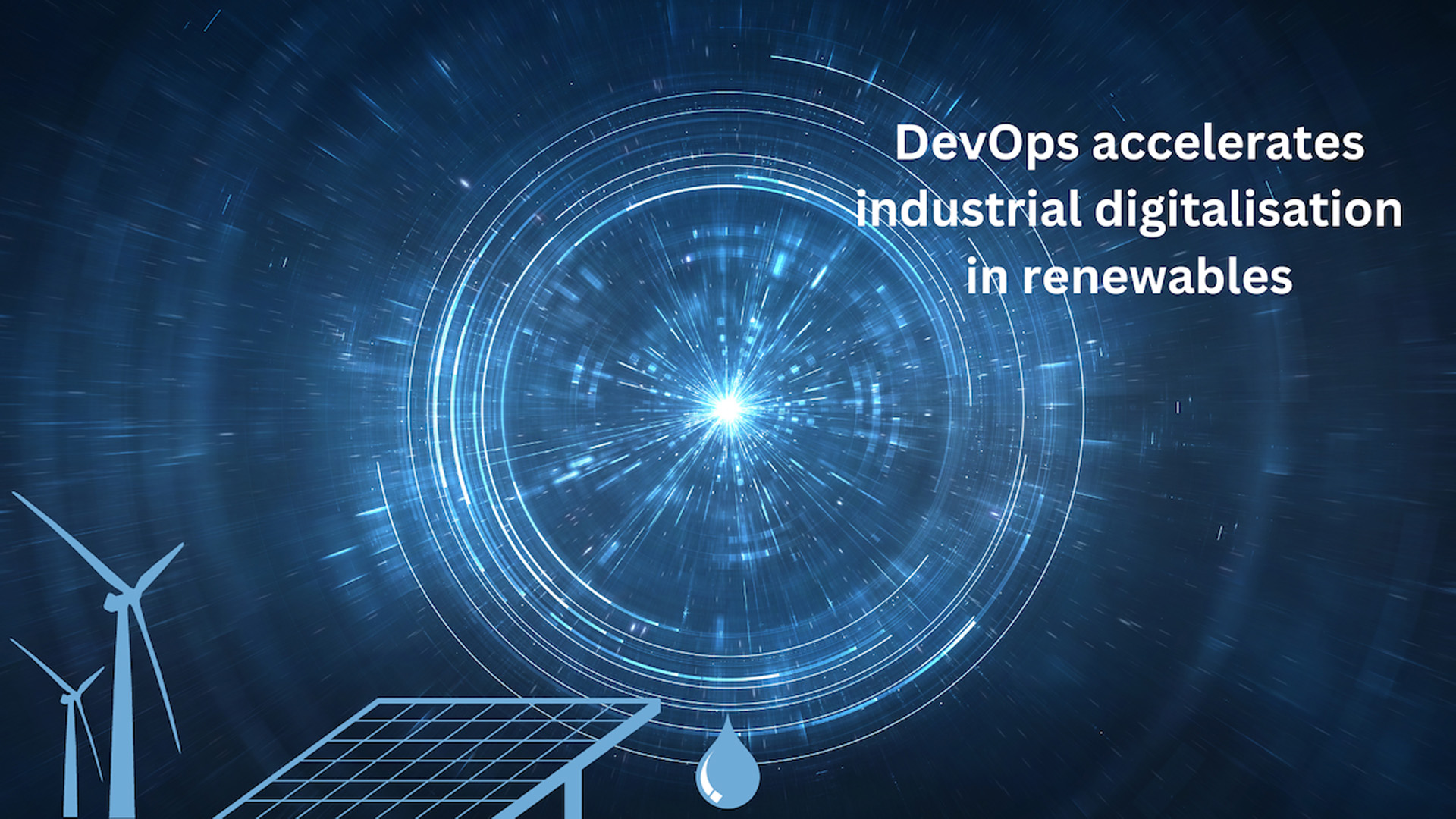In our article series on DevOps - Development & Operations - you will gain insights into what DevOps is, the challenges it addresses, and the value it creates in the renewables sector. In this article, we focus on the barriers to industrial digitalization in renewables and how DevOps overcomes them.
Renewables are no longer an opportunistic green project; they have become critical infrastructure. Consequently, there are clear expectations from authorities and society for both manufacturers and operators in the industry. The reliability of supply, including wind, solar, and hydrogen, needs to be extremely robust. We must eliminate fossil fuels, reduce dependence on Russian gas, and maintain top-notch supply security.
30-fold increase in gigawatts in nearly 30 years
In 2022, the EU set a goal to reduce CO2 emissions by 55 percent by 2030 and achieve climate neutrality by 2050. This involves constructing wind turbines offshore, along coastlines, and on land. 1 gigawatt of wind power can supply approximately 1 million households with green electricity, and the aim is to have 60 gigawatts of wind power in Europe by 2030 and a staggering 340-450 gigawatts by 2050. Currently, the EU's total capacity is approximately 12 gigawatts (source: https://energy.ec.europa.eu/topics/renewable-energy/offshore-renewable-energy_en).
The EU faces a massive upscaling that demands a significantly higher pace than manufacturers and operators are accustomed to. Renewables need to work faster and more agilely, while the requirements from a political standpoint continuously tighten concerning delivery and IT security. This places greater demands on release and operations. So how can we meet these conflicting ambitions?
DevOps serves both development and operations
The core task is to scale wind farms at a significantly faster pace than before. The business needs to develop faster and release products more rapidly without compromising the core operations. This requires increased digitalisation and a DevOps approach that integrates the work of the development and operations and therefore strengthening collaboration between IT, OT, and the business.
With DevOps, development processes can be accelerated, allowing for rapid progression from ideation and concept to release-on-demand. However, it is important to emphasise that DevOps does not automatically remove the measures put in place for release and operations to ensure compliance and cybersecurity, among other things. Ultimately, it is a business decision to determine which measures should be implemented and how they should be prioritised. Nevertheless, the process from ideation to release becomes leaner and more robust, benefiting both the release and operations in the end.
With DevOps, players in renewables can:
- Ensure close collaboration between IT, OT, and the business. DevOps creates strong synergy and a shared mindset between IT development and IT operations, making it easier to meet the business's needs.
- Ensure new agile IT principles and automated, cross-functional processes in the development phase. This means having a smoother flow between individual steps in the processes and automating many manual tasks, reducing human errors in wind farms and accelerating processes without compromising quality, compliance, and security.
- Release new software features faster and more reliably through process steps. This reduces downtime and optimizes productivity. Instead of sending someone into the field, new features are digitally deployed and put into operation more frequently than before.
There will naturally be inherent measures in renewables that cause delays. However, with intelligent industry solutions and automated processes, industry players can reach their goals of scaling wind farms and delivering green energy through a robust infrastructure faster and more securely.

